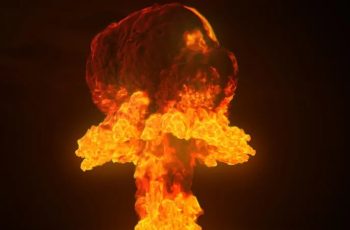Recently released CIA documents from 1984 have unveiled intriguing details about an alien race allegedly discovered on Mars. These documents describe an individual who utilized a parapsychological technique known as “remote viewing” to perceive distant events and locations. The reports indicate the existence of a long-extinct race of “very tall, thin” beings that once inhabited the Martian surface.

During the Cold War, the U.S. Central Intelligence Agency engaged in remarkable experiments that pushed the boundaries of conventional science. Among these initiatives was the “Stargate Project,” which aimed to harness psychic abilities for remote viewing, allowing individuals to visualize distant or unseen targets using only their minds. This project was a collaborative effort involving the U.S. Army, the Defense Intelligence Agency (DIA), and SRI International, a contractor based in California.
The document titled “Exploration of Mars, May 22, 1984,” discusses the potential applications of psychic phenomena, particularly remote viewing. In this context, a subject was given a sealed envelope containing geographical coordinates and a 3×5 card that read: “Mars, time of interest approximately 1 million years B.C.” The objective was to explore the Martian landscape as it existed in the distant past.
Upon receiving the coordinates, the remote viewer reported seeing what appeared to be a “pyramidal structure” characterized by a yellowish or ochre hue. As the session progressed, the observer described encounters with extraordinarily large beings, noting that they were slender and tall, dressed in unusual attire. The viewer also reported discovering a vast cavern and a steep cliff, along with an obelisk that resembled the Washington Monument.
Further observations revealed that the remote viewer encountered “ancient beings” in their final moments. The descriptions conveyed a sense of witnessing shadows of these tall, slim figures, indicating a once-thriving civilization that had met its demise. Interestingly, the observer noted that these Martian inhabitants had a philosophical perspective on death, expressing a quest for survival that ultimately proved futile.
The Stargate Project, which cost approximately $20 million, was initiated partly in response to concerns about the Soviet Union’s alleged research into “psychotronic” or electromagnetic torture. However, the project was discontinued in 1995 after the CIA concluded that it lacked practical utility for intelligence operations.
Remote viewing has been studied in various laboratories worldwide, employing different methodologies. One prominent participant, Joe McMoneagle, claimed to have successfully identified the location of a Soviet Typhoon-class submarine in 1979, a claim later validated by satellite imagery. McMoneagle suggested that the Stargate Project was eventually abandoned due to biases against its findings. While many were eager to utilize the results, there was a general reluctance to acknowledge their legitimacy, fearing potential repercussions.
Beyond traditional espionage activities during the Cold War, the Stargate Project occasionally ventured into more unconventional realms, including the exploration of Mars. During one session, the focus shifted to events that may have occurred on the planet millions of years ago. If the structures described were indeed real, they could signal a significant breakthrough in our understanding of Martian history. However, many professional archaeologists have remained skeptical, often dismissing satellite images of Mars as mundane formations, possibly due to a lack of expertise in interpreting such data.
In one session transcript, the analyst, believed to be Joe McMoneagle, received a sealed envelope with geographic coordinates from an agent known as the Controller, later identified as Captain Holm Skip Ed Water, leader of the U.S. Army’s Remote Vision Team. Dr. Putoff, another program participant, provided the coordinates for Mars for further investigation.
Without opening the envelope, McMoneagle described his remote viewing experiences, perceiving a pyramid-like structure situated on a vast, yellowish landscape. He was subsequently directed to focus on a time closer to that specified in the envelope. During this exploration, he reported seeing atmospheric conditions resembling a sandstorm and the aftermath of a significant environmental disaster.
When asked about any activity prior to the catastrophe, McMoneagle described observing shadows of towering entities that once inhabited the area but had since disappeared. He attempted to revisit the era when these beings were still present on Mars, but faced interruptions. Nevertheless, he succeeded in perceiving these entities, characterizing them as exceptionally tall and slender, dressed in peculiar clothing.
As the session continued, McMoneagle shifted his focus to a different location on Mars, detailing expansive structures with large chambers. He described a colossal obelisk, similar to monuments found in Washington, D.C. While observing, he began to describe the pyramids, hypothesizing that they were not merely protective structures against storms but rather filters for sandstorms. He noted that these pyramids were significantly larger and distinct from any known structures on Earth.
During the session, McMoneagle also reported witnessing entities entering a state of hibernation, anticipating the conclusion of an ecological disaster. Despite their philosophical outlook on the unfolding events, these beings recognized that their era was coming to an end and sought survival methods, though ultimately without success.
Concluding the session, McMoneagle speculated about the potential aftermath of a cosmic event that could have obliterated Mars’ atmosphere, possibly due to a meteorite or comet impact. He acknowledged the difficulties in accurately perceiving time during remote viewing sessions.
While the findings from these sessions may seem extraordinary, interest in Mars and the study of ancient civilizations on the planet persists. Some of the structures described by McMoneagle bear resemblance to artifacts observed in satellite images, which some scientists interpret as evidence of a possible ancient civilization.
It is important to recognize that the documents in question are officially declassified CIA materials, now accessible on the agency’s website. Although the claims may appear unscientific, they prompt us to consider the potential of human capabilities and the mysteries that may lie beyond our current understanding.

As science continues to evolve, there may come a time when these extraordinary observations are validated. For now, they remain a captivating chapter in the history of clandestine research, inviting further exploration into the unknown realms of our universe.


